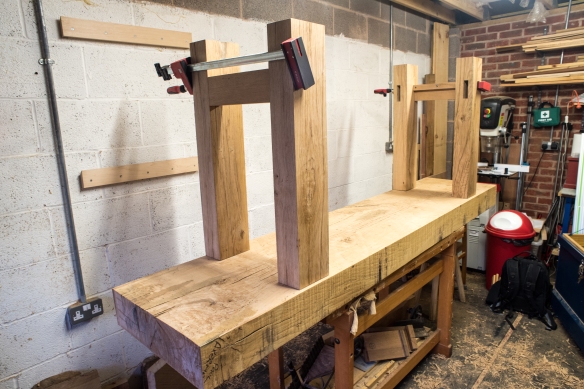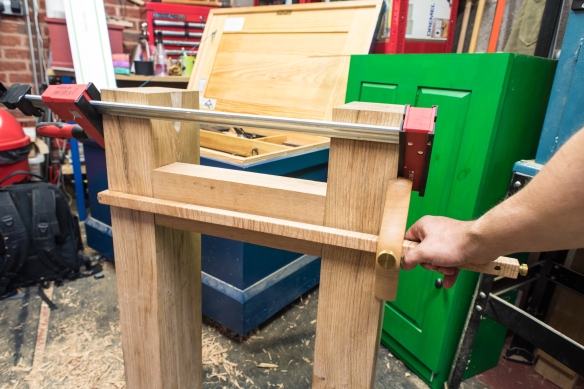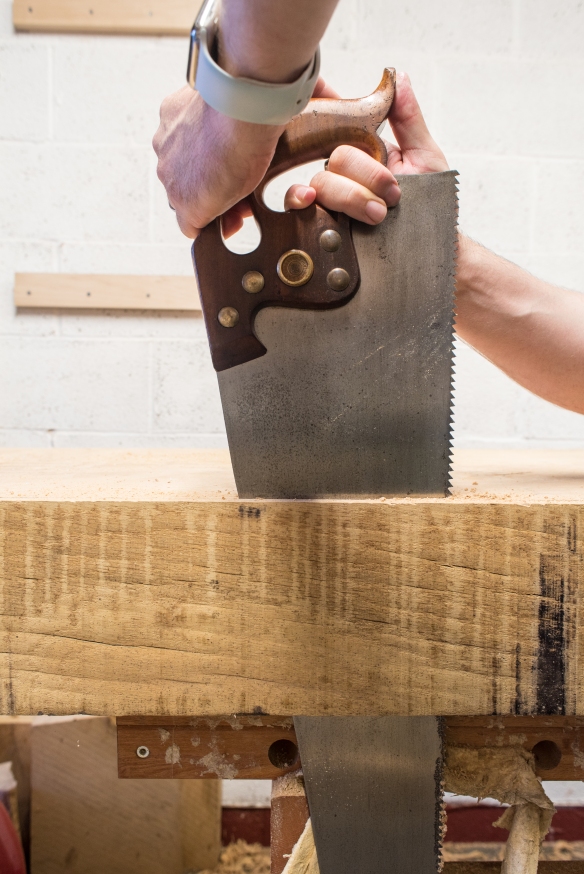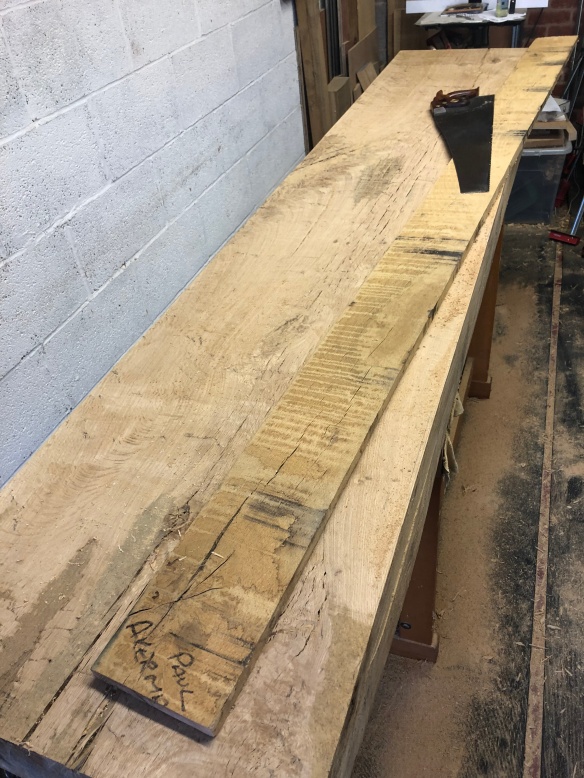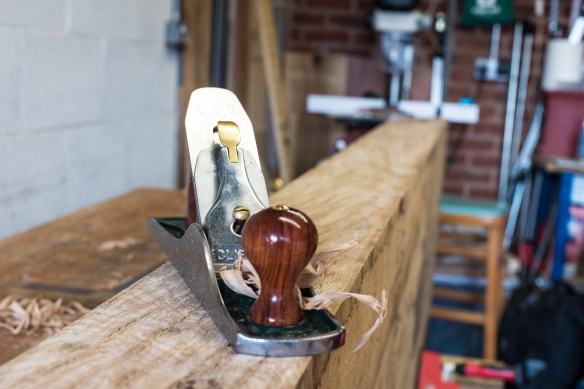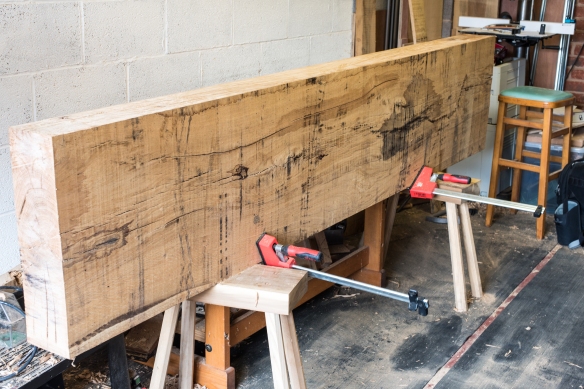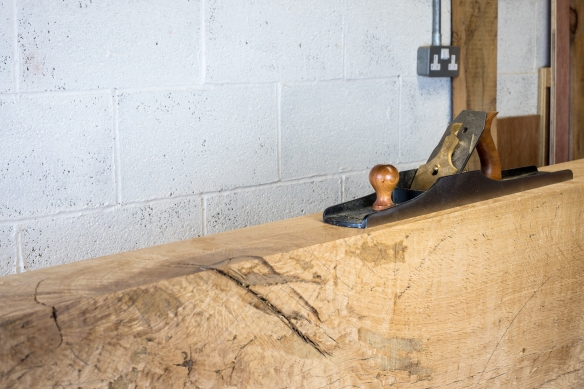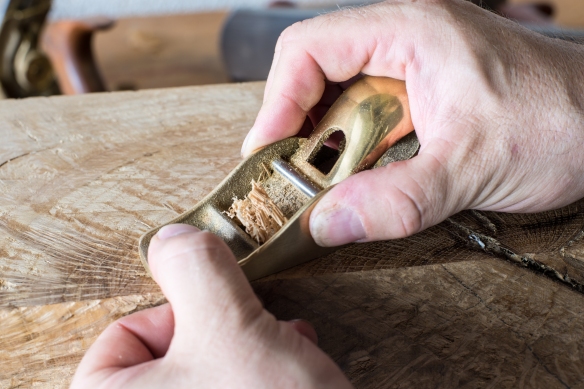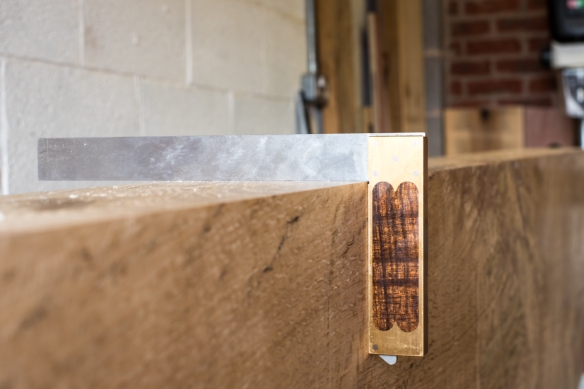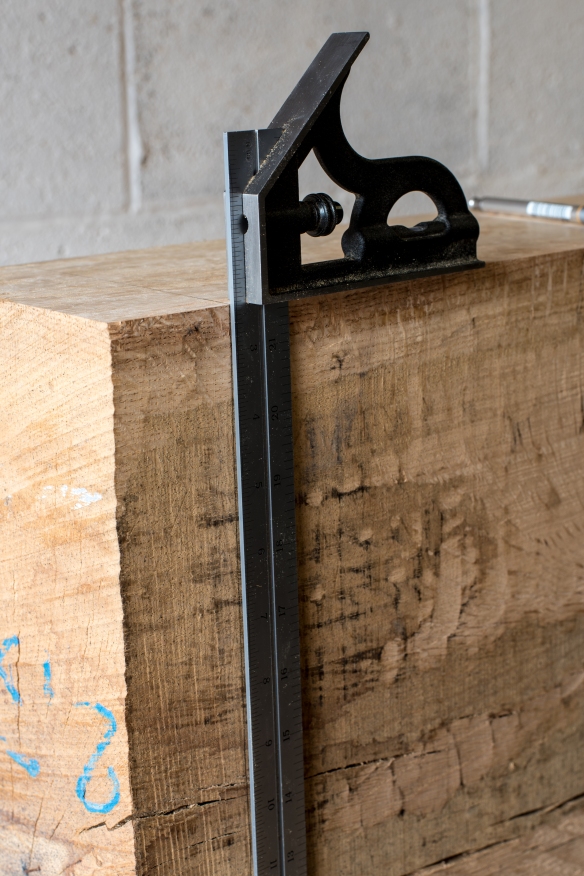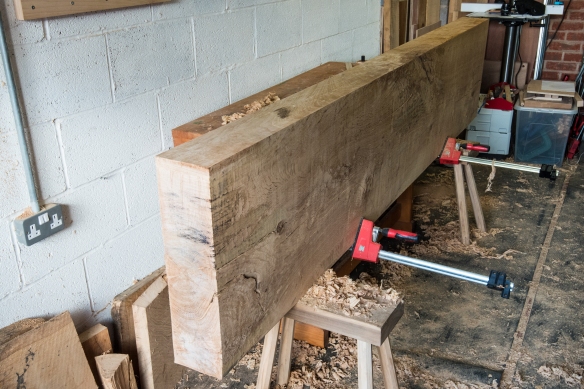One of the reasons I originally wanted to build a Roubo workbench was the iconic leg joint – a double tenon which extends through the top, and where the outer-facing tenon is shaped as a sliding dovetail. The joint has practical purposes, as it doubles the surface area of the joint (for additional strength), and a double tenon should resist twisting out of alignment. But fundamentally, that joint excites me, both in terms of executing it, and seeing it on the workbench every time I enter the shop. As I’ve written before, this build is more akin to timber framing than to furniture (and is far removed from the lutherie I started with), and that double tenon joint has become for me an expression of skilled handcraft (providing of course that I don’t botch the joint, right?).

Laying out the tenons
In contrast to the undercarriage, where I cut the mortises before the tenons, with the jeg joinery I decided to cut the tenons first. This way, I can then do a dry fit of the complete undercarriage and layout from that the position of the mortises on the slab top.
The first stage of joinery, as always, is laying out the joint, and Roubo poses us a choice – do we want to cut the joint as he describes it in the text, or as it is illustrated? The difference is the location of the rear tenon, which Roubo describes as being flush to the rear face of the leg (effectively as a barefaced tenon), but in the illustration is placed more centrally with two shoulders. Roubo explains that while most benches are built with the rear tenon flush to the rear of the leg, he considers that it would be best to have a shoulder either side of this tenon. I decided to follow historic French workbench builders, rather than implement Roubo’s suggested improvement.
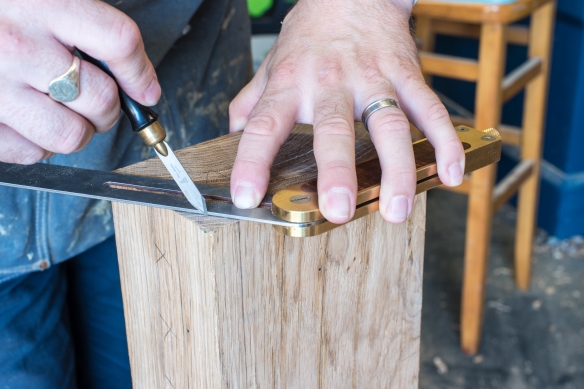
Laying out the dovetail slopes
To layout the joint I divided the thickness of the leg into three equal parts, and struck lines on the end grain and both sides with the Hamilton Toolworks traditional marking gauge. The baseline for the joint was measured from the end of the leg and then transfered to all four faces of the workpiece with a marking knife and Vesper 10″ square. Because the top of the slab has not been flattened yet, there is some variation in the thickness of the slab, and the baseline of the joint was taken by measuring the thickness of the slab at the locations of each leg joint and then adding a hair to the thinnest dimension.
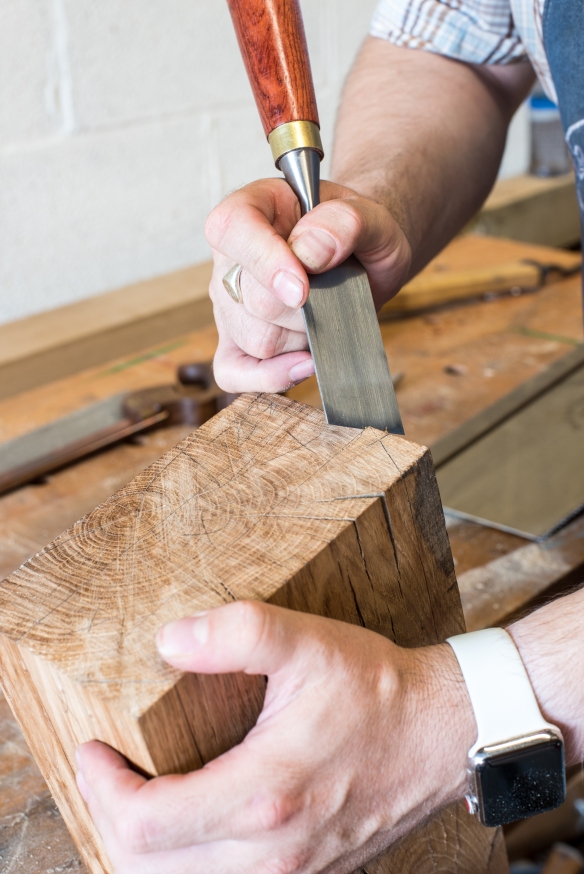
Cutting a notch into the waste side of the layout line provides a clean starting point for the saw
The final element of the layout was to mark the slope of the sliding dovetail – I set a sliding bevel to 60 degrees and struck lines from the rear corner of the dovetail to the face of the leg. An easy way to check that the dovetail is on the correct face of the workpiece is to make sure that the mortise for the short stretcher is on the opposite face – if you have dovetails and mortises on the same side, then something has gone wrong!
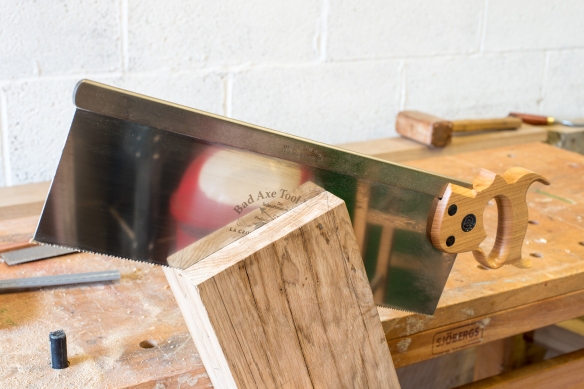
Big joinery requires a big (and accurate) saw. Enter the Roubo Beastmaster by Bad Axe
Cutting the joinery though 6 pouce thick oak is heavy work, but straight forward. This build was one of the reasons I bought the Roubo Beastmaster tenon saw from Bad Axe – at 5″ plate depth and 18″ long, it is a timber framing saw with the precision required for big joinery. A good handsaw would also work for cutting this joint, although I personally find backsaws easier to use in this sort of application.
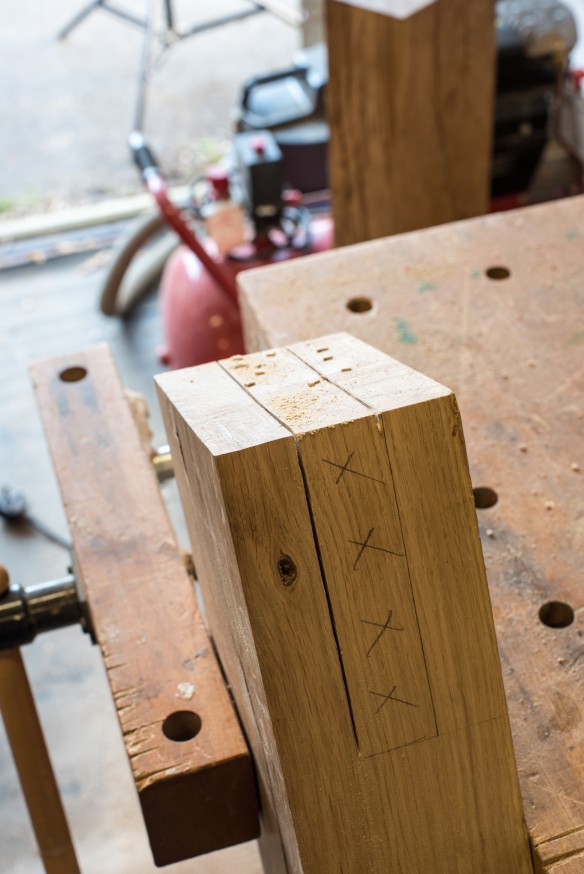
Here you can see how the first two cuts have been made to the lefthand layout lines, and now I make the cuts against the righthand layout lines, turning the leg in the vise after each cut.
Cutting the joint is similar to cutting the tenons for the stretchers, albeit on a bigger scale and with a few additional nuances. The leg was placed on a block of scrap to elevate it above the top of my Sjoberg bench, and secured in the vise at an angle. Essentially the job is to remove the waste between the two tenons, and then cut the slope of the dovetail.

Cutting the shoulders of the dovetail slopes
I find it easier to make all of the cuts to one side of a layout line before switching to cutting the opposite side of the next line, and so that is what I did here. Starting at the corner nearest me, I cut against the lefthand layout line until the saw hit the baseline and the opposite corner of the joint. I then rotated the leg 180 degrees in the vise so that it was facing the otherway, and then cut to the lefthand yout line on the opposite side. This meant that half the cuts had been made to each side of the joint, and I could now make the next two cuts against the righthand layout lines. With this second pair of cuts, the saw kerf had already been established across the end of the leg, so it was a case of starting in the corner nearest me and working down the remaining layout line until the baseline was hit. I then stood the leg vertically in the vise, and cut straight down to remove the triangle of waste that remained in the base of the cut. The slopes of the dovetails were then cut with the same saw, and the shoulders cut with the Bayonet.
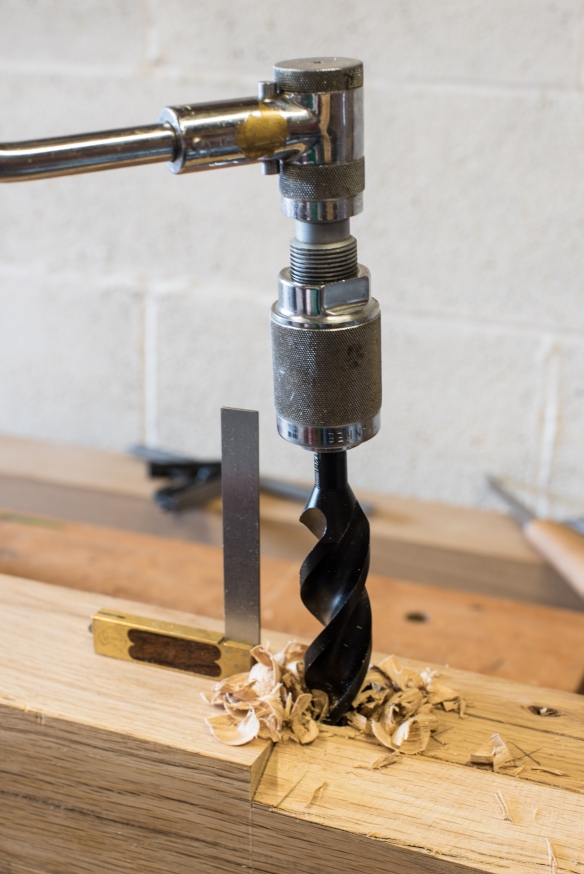
Drilling out the waste with a Woodowl bit and brace
Now, you could chisel out the waste from between the tenons, but that sounds like a lot of work. Much easier is to drill out the waste, which I did with a 1 1/8″ Woodowl auger bit (the largest bit I have) in my North Bros brace, getting as close to the baseline as I dare. As beefy as it is, the Roubo Beastmaster did not quite have enough depth under the sawback to reach the baselines of the tenons (which are 5 3/4″ deep), and so a small webbing of oak remained. I knocked this out with a mortise chisel and mallet, and the waste block dropped out of each joint.
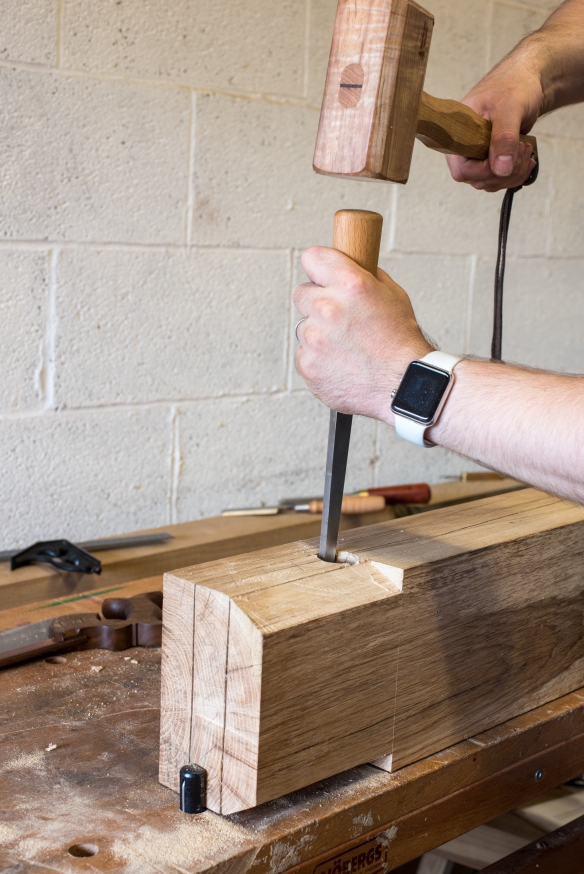
After drilling out the majority of the waste, the remaining webbing is removed with a mortise chisel.
There is a little bit of clean up to do on the tenons, mainly cleaning up the baseline between the tenons, and also a spot of paring on a few of the dovetail slopes. But this is a major step forwards with the bench, and as soon as my slab-moving team are next available we will move the slab into position to layout the double mortises and get the second half of this joint cut.
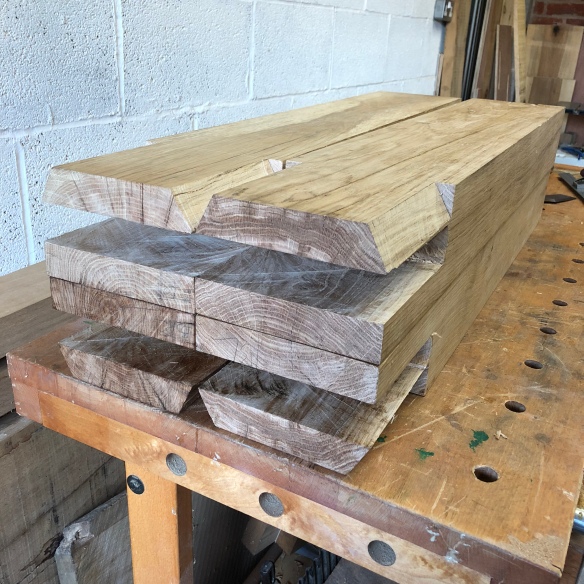
Four legs with the joinery cut

